Are you looking for the best alternative to QuickNode Streams? If so, you’ve come to the right place. In this guide, we introduce Moralis’ Streams API—the best solution for setting up Web3 data pipelines. With our intuitive interface, you can effortlessly monitor wallet or smart contract events on any chain with just a few clicks. For a quick overview, check out this table highlighting the benefits of Moralis Streams compared to QuickNode Streams:
For a more in-depth breakdown of the table, further information on QuickNode and Moralis, and a tutorial on how to set up your own data pipelines, join us in this guide as we lay it all out for you!
Ready to start using the Streams API immediately? Sign up with Moralis for free to get instant access to our industry-leading development tools!
Overview
QuickNode Streams is a solution allowing developers to set up Web3 data pipelines. However, while they offer a solid service, it’s not without significant flaws. For instance, QuickNode Streams offers limited chain support, and each stream is restricted to just one chain. Additionally, QuickNode Streams has low flexibility, as it’s only possible to configure data pipelines based on a small number of predefined datasets. Luckily, there are several prominent QuickNode Streams alternatives, and at the top of the list, you’ll find Moralis’ Streams API!

But what exactly is Moralis’ Streams API? How does it work? And why is it the best QuickNode Streams alternative? If you’re looking for the answers to these questions, then this read is for you. Let’s dive straight in!
What is QuickNode Streams?
QuickNode Streams provides a way to set up Web3 data pipelines, enabling real-time streaming of blockchain events into decentralized applications (dapps), databases, and other platforms. Designed with simplicity in mind, QuickNode handles the underlying complexities of streaming blockchain data, allowing developers to create Web3 data pipelines with just a few clicks.
 Introducing Moralis’ Streams API – The Top QuickNode Streams Alternative
Introducing Moralis’ Streams API – The Top QuickNode Streams AlternativeMoralis’ Streams API is the ultimate solution for streaming real-time blockchain data directly into your dapps and databases. Our intuitive user interface allows you to effortlessly set up Web3 data pipelines with just a few clicks. In return, you receive instant updates on any wallet or contract event via Web3 webhooks as soon as they occur!

The Streams API offers unparalleled scalability and is the industry’s most comprehensive Web3 streams solution, supporting all major blockchains, including Ethereum, Polygon, BNB Smart Chain (BSC), and many more.
Additionally, the Streams API covers all types of events, tokens, wallets, DeFi platforms, and more, enabling you to customize your streams to fit any use case seamlessly. As such, this solution provides everything you need for real-time Web3 data.
By leveraging the Streams API, you can integrate features like real-time alerts into your projects, populate your databases with the latest data, and enhance the overall experience of your dapps with timely, actionable insights.
Now that you have an overview of Moralis’ Streams API, let’s explore some of the key benefits of this industry-leading solution!
Benefits of the Streams API
So, what makes Moralis’ Streams API the best QuickNode Streams alternative? To answer this question, let’s explore five benefits of this top-tier tool:
Comprehensive Cross-Chain Support: Moralis Streams supports over 30 blockchains, enabling you to set up Web3 data pipelines for all major networks.
Enriched & Decoded Data: With Moralis Streams, you can get fully enriched and decoded responses for each event, including token decimals, address labels, balance details, and more.
Unparalleled Scalability: Designed for scalability, Moralis Streams allows you to seamlessly manage anything from one to 100+ million addresses within a single stream. As such, as your projects grow, you’ll see no performance degradation in your dapps.
Multi-Chain Monitoring: Monitor multiple chains in a single stream, eliminating the need to create a new pipeline for each chain you interact with.
Available in Free Plan: Moralis Streams is available in our free plan, allowing you to try it out without any cost.
That covers the basics of Moralis Streams. In the next section, we’ll compare Moralis Streams and QuickNode Streams to underscore the key differences between these two services!
Moralis Streams Vs. QuickNode Streams
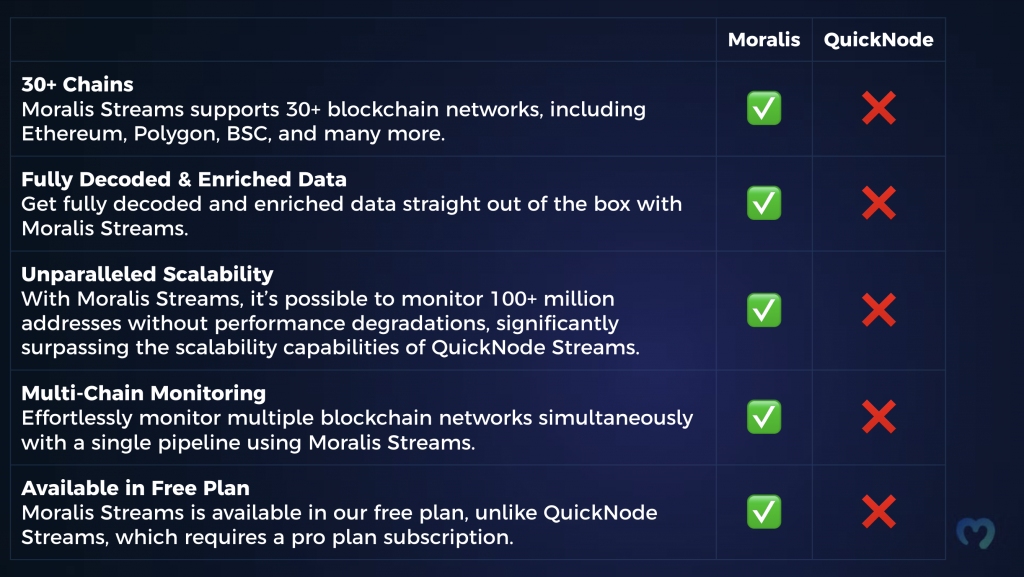
Full Tutorial: How to Get Real-Time Data with Moralis Streams
With Moralis Streams, you can effortlessly create customized Web3 data pipelines with just a few clicks. To demonstrate, here’s an eight-step tutorial on how to monitor USDC transactions:
Step 1: Register for a free account with Moralis, log in, go to the “Streams” tab, and click the “+ Create Stream” button:
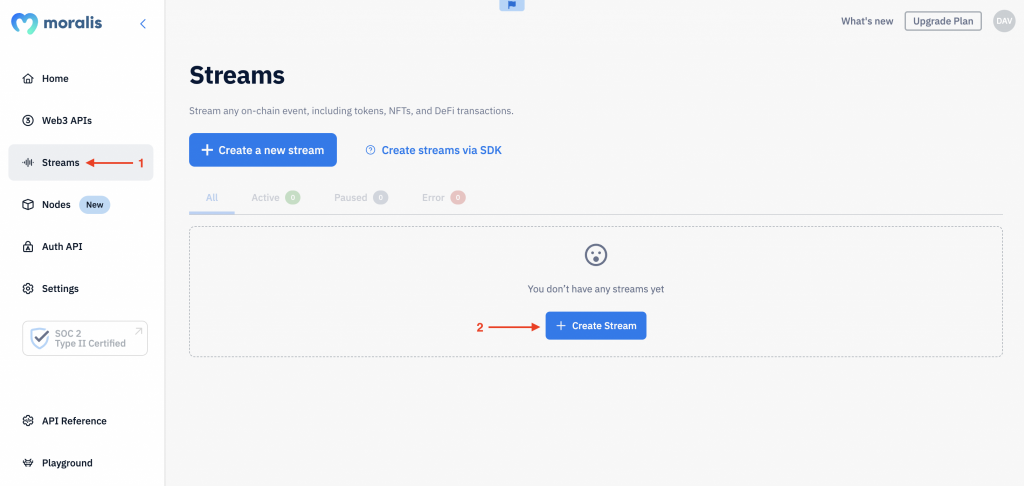
Step 2: Name your stream and select the type of events you want to track. For this tutorial, we’ll choose “Contract Events”. You can also opt to exclude potential spam events to filter out unwanted on-chain activity:
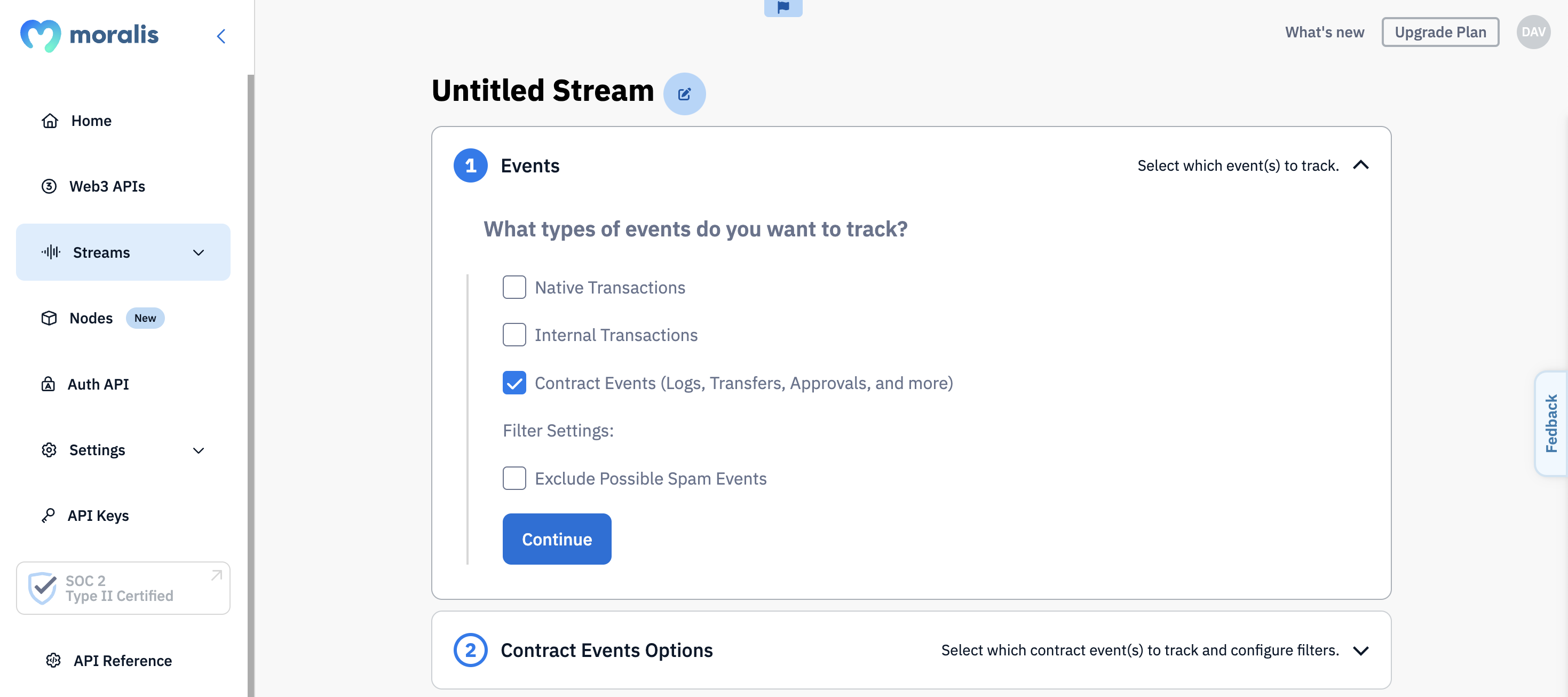
Step 3: Select the contract events you wish to track. In this case, choose “Common Events” followed by “Token Transfers”:
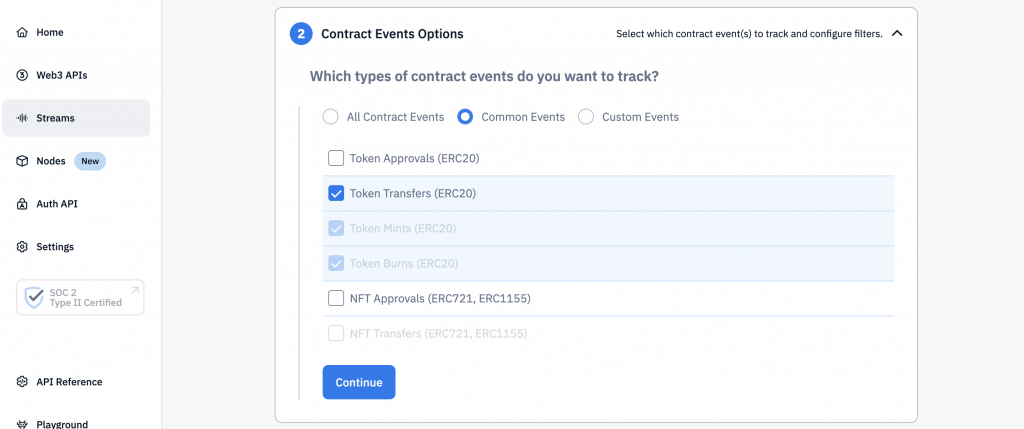
Step 4: Add a tag to your stream and select other information you want to include in the responses:
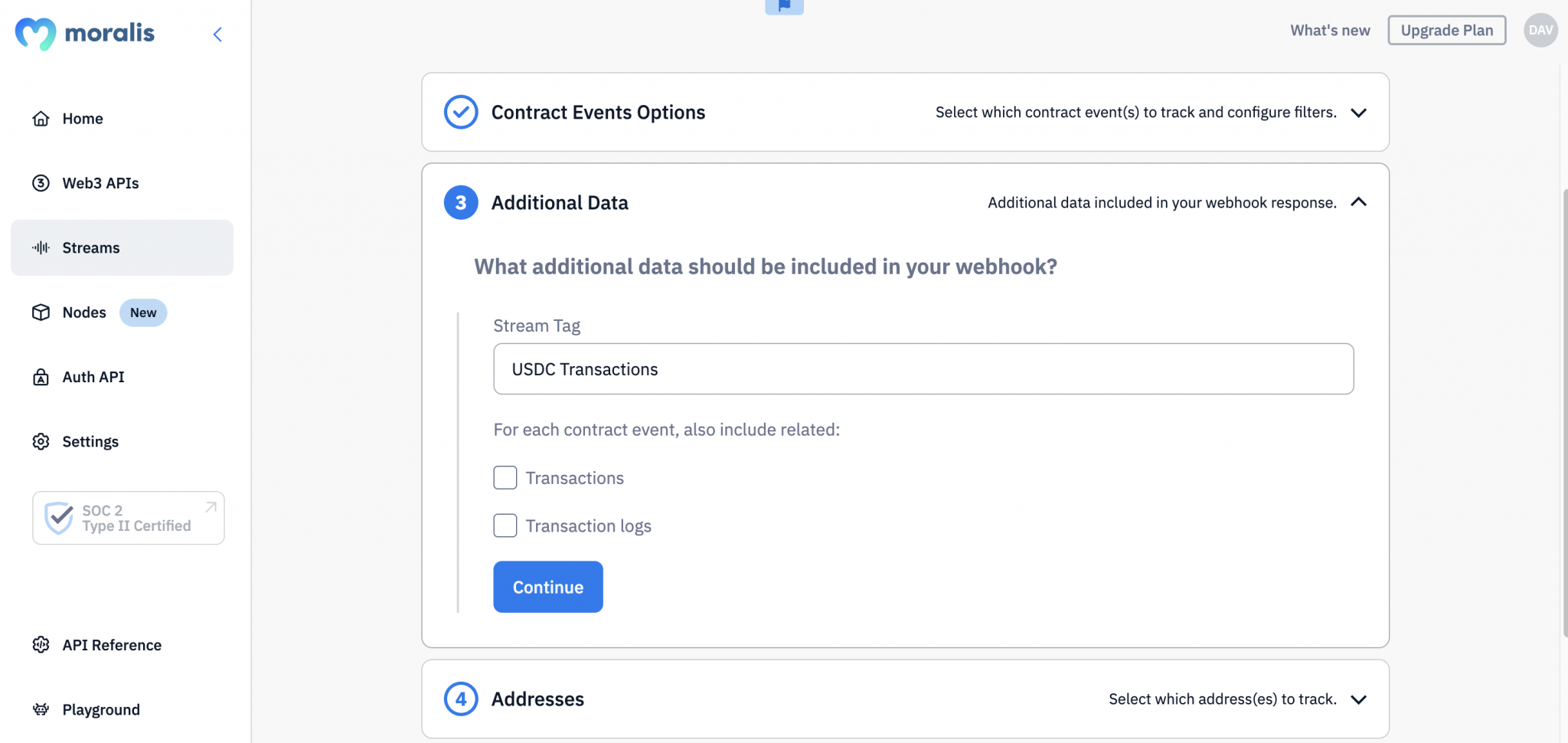
Step 5: Add the contract address/addresses you wish to monitor. For this tutorial, we’ll add the USDC contract address:
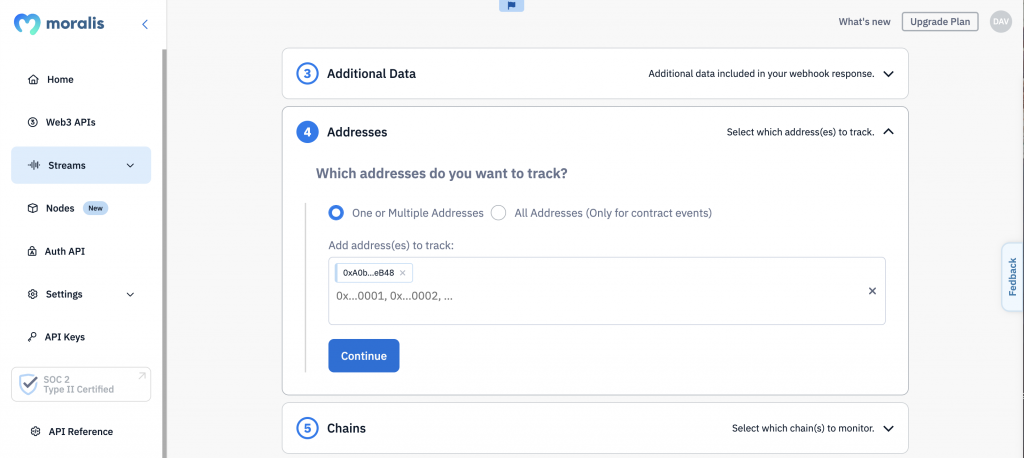
Step 6: Select the chain(s) you want to monitor. We’ll choose Ethereum, but you can select as many networks as you’d like:
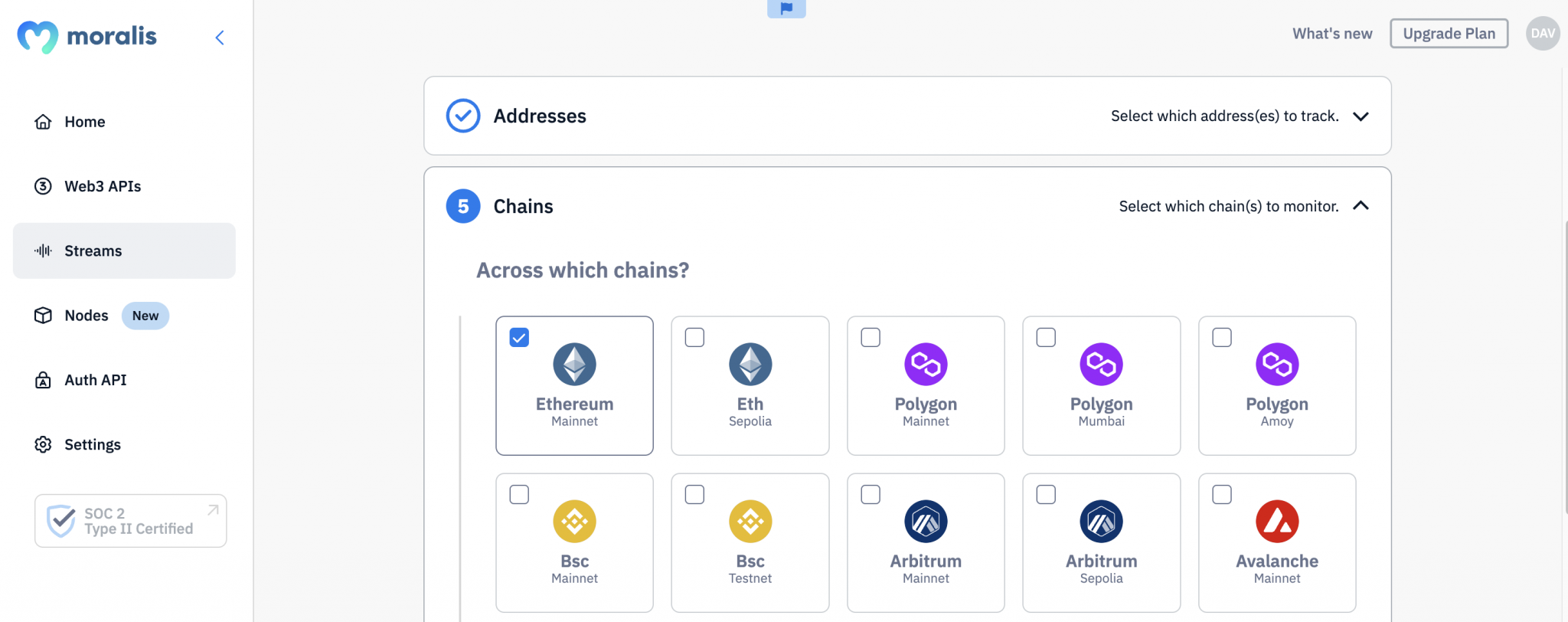 Source link
Source link 


















